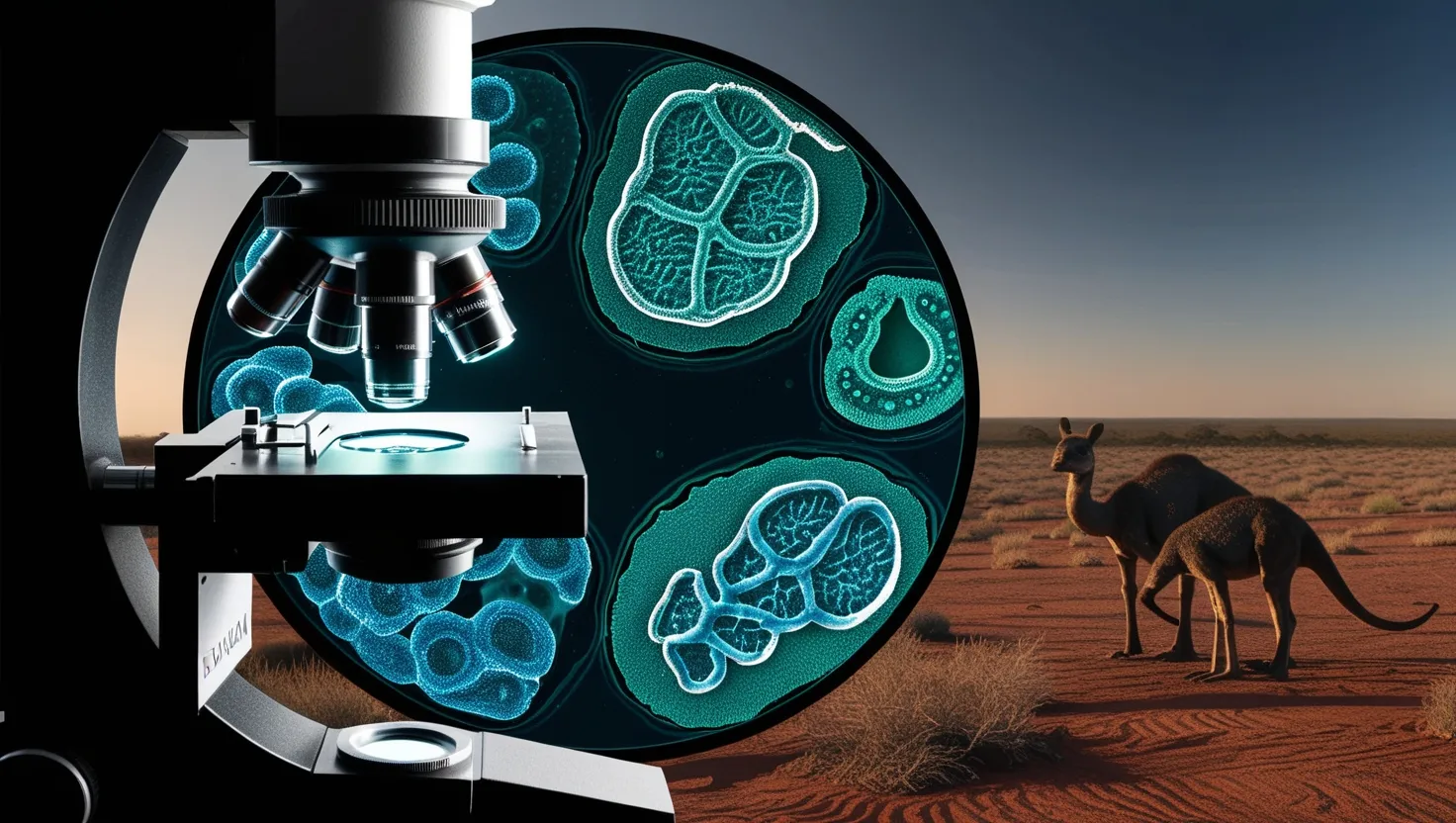The Ediacaran Nanofossils: Microscopic Evidence of Advanced Life Before It Should Exist
The story of life on Earth is constantly being rewritten. As we peer further into our planet’s distant past, we discover that life’s timeline is far more complex than we once thought. In the remote landscapes of South Australia’s Flinders Ranges, hidden within ancient rocks, lies evidence that might transform our understanding of early life on Earth.
Have you ever wondered what our planet looked like before the familiar animals we know today evolved? The Ediacaran period, spanning from approximately 635 to 539 million years ago, offers us a glimpse into this mysterious chapter of Earth’s history.
The Ediacaran fossils, first discovered in 1946 by geologist Reg Sprigg in the Ediacara Hills of South Australia, represent some of the earliest known remains of animal life. These findings marked a revolutionary moment in paleontology, revealing that complex life existed far earlier than scientists had previously believed.
“The past is never dead. It’s not even past.” - William Faulkner
What makes these discoveries so remarkable is their age - dating back approximately 565 to 543 million years, these fossils provide evidence of diverse and relatively advanced organisms existing long before the Cambrian explosion, which was historically viewed as the dawn of complex life.
The Ediacaran period wasn’t a uniform stretch of evolutionary history. Instead, it featured four distinct biotic intervals, each characterized by unique ecological conditions and life forms. The earliest interval, from 635 to around 575 million years ago, was dominated by large ornamented microfossils known as acritarchs. This was followed by the Avalon biota (575-560 million years ago), the White Sea biota (560-550 million years ago), and finally the Nama biotic assemblage (550-539 million years ago).
What’s particularly fascinating about the nanofossils found in the Ediacaran sediments is their structural complexity. These microscopic remains display characteristics that seem inconsistent with what we’d expect from primitive life forms of this period. Despite measuring just 50-200 nanometers, they exhibit symmetrical internal structures resembling components found in modern eukaryotic cells.
How could such complexity exist so early in Earth’s history? This question continues to challenge paleontologists and evolutionary biologists.
The organization of these nanofossils into what appears to be specialized tissue types, including structures resembling neural networks with dendritic patterns, is especially puzzling. According to conventional evolutionary timelines, this level of cellular specialization shouldn’t appear until the Cambrian period, at least 30 million years later.
“In all things of nature there is something marvelous.” - Aristotle
The geological context surrounding these fossils adds another layer of mystery. The nanofossils appear exclusively within thin sedimentary layers associated with unusual trace element profiles, including anomalous concentrations of iridium and platinum group elements typically associated with meteoritic material.
Could these unusual concentrations suggest an extraterrestrial origin or influence? Or do they simply represent unique preservation conditions that allowed these delicate structures to survive for over half a billion years?
The molecular analysis of these ancient remains reveals preserved organic compounds containing carbon arrangements that suggest metabolism pathways found only in complex animals today. What’s remarkable is that these compounds maintain their structural integrity despite the extreme age and pressure conditions, which seems to contradict what we know about biochemical degradation rates.
The astronomical conditions during the Ediacaran period may have played a role in shaping the evolution of these early life forms. The Moon was relatively closer to Earth than it is today, resulting in stronger and more rapid tides. The day was shorter, lasting about 21.9 ± 0.4 hours, with approximately 13.1 ± 0.1 synodic months per year and 400 ± 7 solar days per year. These conditions would have created a significantly different environment than what we observe today.
Since their initial discovery, Ediacaran fossils have been found in multiple locations worldwide, including North Carolina, Newfoundland, British Columbia, England, China, Africa, Australia, Ukraine, and the White Sea coast of Russia. However, significant numbers and varieties of individual fossils have been found only in southwest Africa and South Australia.
What’s particularly intriguing is the evidence suggesting a mass extinction during this period. Some scientists propose that early animals changed the environment, coinciding with the transition between the White Sea and the Nama-type biotas. Others theorize that this extinction event may have been the result of an anoxic event, where oxygen levels in the oceans dropped dramatically.
The study of these ancient fossils using quantum microscopy techniques has identified what appear to be fossilized molecular machines within these cells. These structures show geometric precision at scales below 15 nanometers and maintain consistent patterns across multiple samples from different locations within the formation.
Is it possible that cellular complexity evolved multiple times throughout Earth’s history, with previous iterations leaving minimal fossil evidence? Or are we seeing the results of accelerated evolutionary processes triggered by environmental factors that we don’t yet fully understand?
“The fossil record is like a film of evolution from which 999 of every 1,000 frames have been lost on the cutting-room floor.” - Richard Dawkins
The Ediacaran nanofossils challenge fundamental assumptions about the rate and complexity of early life’s development. Their continued study may require significant revision of evolutionary timelines or reveal entirely new mechanisms for biological information transfer in Earth’s deep history.
In 2017, at Mistaken Point, Newfoundland, researchers discovered a fossil of a wormlike creature called Conotubus that lived during the last 10 million years of the Ediacaran period. Findings like these continue to add pieces to the puzzle of life’s early evolution on our planet.
Have you considered how different our understanding of life’s history might be in another decade, as new technologies allow us to see even further into the microscopic world of these ancient organisms?
The quest to understand these ancient life forms continues to this day, with scientists around the world examining these fossils using increasingly sophisticated techniques. Each new discovery has the potential to reshape our understanding of life’s earliest chapters on Earth.
As we continue to study these remarkable fossils, we may find that life’s early history was far more complex and dynamic than we ever imagined. The Ediacaran nanofossils stand as a testament to the incredible persistence of life on our planet and remind us that nature’s innovations often predate our discovery of them by hundreds of millions of years.
What other secrets might be hiding in the ancient rocks of our planet, waiting to be discovered? And how might these discoveries change our understanding of our own place in the long story of life on Earth?
The study of Ediacaran fossils is more than an academic pursuit—it’s a journey into our planet’s deep past that reveals the incredible tenacity and creativity of life. As we continue to explore these ancient remains, we gain not only scientific knowledge but also a deeper appreciation for the long, complex journey that led to the diverse biosphere we inhabit today.
Perhaps the most profound lesson from these ancient fossils is that life’s history is never as simple as we initially believe. Each new discovery adds complexity to the story, reminding us that our understanding is always evolving, just like life itself.





